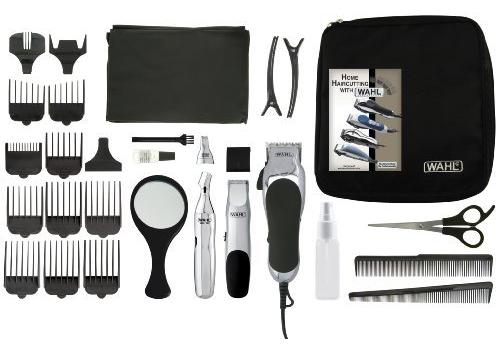
Should I Build Personal Wealth or Help the Poor?
A creatively critical comment on my recent writings about saving and investing money, sparked the idea for the following post. Chris commented that rather than focusing on improving our lives with riches and education and business activities, we should be helping the poor. He quotes Psalm 41:1 which says “Blessed is he that considereth the poor”. I would argue that personal wealth coupled with a faith that calls us to action is a powerful antidote to world poverty. But throwing money and resources at poverty without thinking through the problem correctly can create an equally sticky issue of dependency.
Helping the Poor? It’s Complicated
Poverty is almost as old as human history and is a complex issue with no easy answers. Broiling a fish and giving it to a hungry man will perhaps keep him from starvation today. But what about tomorrow and the day after that? What about the estimated 1.7 billion people living in what’s termed ‘absolute poverty’? Is the answer to ship surplus food from wealthy nations to nations less fortunate? What about the impact on the local food markets of those countries now flooded with ‘aid rice’ re-sold for a quick profit in a black market enterprise by corrupt officials? What about clean drinking water? How long will that village well drilled by a Western NGO eight years ago stay viable? Will anyone in the village be able to drill another one if it runs dry next year? These and a thousand similar questions need to be asked in researching sustainable ways to reduce global poverty, while avoiding the issue of dependency.
Now let’s get a little more personal with the questions. How can I start helping the poor without hurting them, today?
Ten Ways Each of Us Can Start Helping the Poor Today
1. Live Simply – By living simply, we use less of the world’s resources. Living simply also enables us to save more than we spend and to allocate some of our wealth to helping the poor in creative, sustainable ways.
2. Give Wisely – I still remember the one homeless man I met in Chilliwack, BC, Canada. He didn’t want cash, like most beggars. He wanted food. And not just any food, he wanted a ‘whole chicken’! As crazy as it seems, five minutes later, I made his wish come true and handed him a piping hot, broiled chicken from the local grocery store. The memory of his beaming smile and ‘God bless you, man’ lingers in my mind. Did I help him? Temporarily. In the same way, you can help someone in a developing country by buying them food for a day. There’s a well-worn Chinese proverb that aptly describes this: “Give a man a fish and you feed him for a day. Teach a man to fish and you feed him for a lifetime”. When you are looking to give, try to find organizations to give to that go beyond basic aid distribution. They should be involved in community and economic development as well as educational opportunities tightly integrated with a gospel-centric, Christian world-view.
3. Travel the World – Everyone from the West should get the opportunity to experience the developing world. And I’m not talking about air-conditioned bus travel, hitting all the tourist traps. I’m talking about getting in a beat-up taxi and going down to the local market to talk to real people who live on less than one tenth of the income we enjoy. I’m talking about stooping to enter a mud hut where a mother is serving small portions of rice or some other staple to her growing family struggling to survive on the family’s meager earnings, but who will gladly share their dwindling food supply with you. An experience like this will change you permanently.
4. Build a Socially Responsible Business – Are you an entrepreneur? A successful business person? How is your business impacting the world’s poor? There are many businesses trying to model responsible ways of helping the poor. TOM’s shoes gives a pair of shoes to folks without shoes every time someone buy’s a pair from them. Many more examples could be given. Be creative and find a way to channel some of those business profits into opportunities for the world’s poor to rise above the cycle of poverty.
5. Invest In Micro Financing – Micro-financing, is a way to invest the money you’ve saved up, by loaning it to business men and women in developing countries. They use it to build their businesses, and many times it is exactly the ticket they need to a successful and profitable business future. Once the loan term is over, they pay it back and the money can be used once more to help another enterprising individual or group get their start in business. You can learn more about micro financing through Christian Aid Ministries’ SALT program.
6. Learn to Be a Farmer – You’re probably wondering how this could be part of helping the poor. Here’s how. Seventy-five percent of the world’s poor are farmers. If you could increase the income of these farmers through better farming methods and improved crop yields, the small farmers of the world would be able to feed more people and be better off themselves. One man, an unsung hero of the last century did just that. His name was Norman Borlaug and he spent a good portion of his 95 years, training subsistence farmers in the world’s poorest nations better farming practices. Here’s a quote from the Wall Street Journal article which covers the story beautifully:
In the mid-1960s, India and Pakistan were exceptions to the trend toward more efficient food production; subsistence cultivation of rice remained the rule, and famine struck. In 1965, Borlaug arranged for a convoy of 35 trucks to carry high-yield seeds from CIMMYT to a Los Angeles dock for shipment to India and Pakistan. He and a coterie of Mexican assistants accompanied the seeds. They arrived to discover that war had broken out between the two nations. Sometimes working within sight of artillery flashes, Borlaug and his assistants sowed the Subcontinent’s first crop of high-yield grain.
7. Volunteer Your Time – It is one thing to give five or ten percent of our income to helping the poor. It is quite another to spend the majority of our time living to help others live better. People like Mother Teresa come to mind. But, before you banish the notion thinking you could never live like her, consider spending just six months to a year in a developing country. You could teach a micro financing class to local business leaders or help out in a school or orphanage. This type of experience will change you permanently. Your future giving will also follow your heart to the places you have been, with inside knowledge of the challenges faced by the people you are helping.
8. Be a Mentor – I can attribute many of my personal and business successes in life to individuals who came along side me and shared their expertise. Everything from learning to read, to the best practices in business can be shared with young folks in your family, in your community or across the world, looking to get a step up in life.
9. Learn About the People You Are Helping – Did you know that over 10 million children in India are involved in ‘bonded labor’? It is basically child slavery used to pay off an increasing debt load often owed by the children’s parents. Wherever you choose to begin helping the poor, make sure you learn about the culture, the language and the individual lives and needs of the folks you are helping.
10. Find Creative Ways to Help the Poor – Born Into Brothels is a documentary covering the unusual way in which Zana Briski used photography to help children caught in the poverty of the Calcutta red light district. From the article linked above:
After several years of learning in workshops with Briski, the kids created their own photographs with point-and-shoot 35 mm cameras. Their images capture the intimacy and color of everyday life in the overpopulated sections of Calcutta. Proceeds from the sale of the children’s photographs go to fund their future education.
Will poverty ever be fully eradicated? No. Can you and I have a powerful impact on reducing world poverty? Absolutely. Jesus is quoted as saying, ‘the poor will always be with you’. It is part of the fallen human condition. It is a cycle of broken relationships strung out over generations. The path out of poverty for most, includes someone outside the cycle of poverty who helps them, educates them, and gives them hope for a better tomorrow.
More Reading:
How are you helping the poor, today?








 Cost (a mere $15 at time of writing)
Cost (a mere $15 at time of writing)
